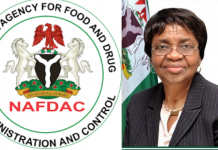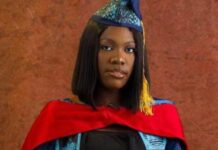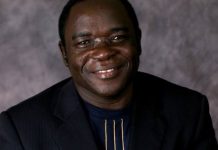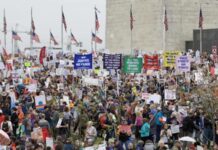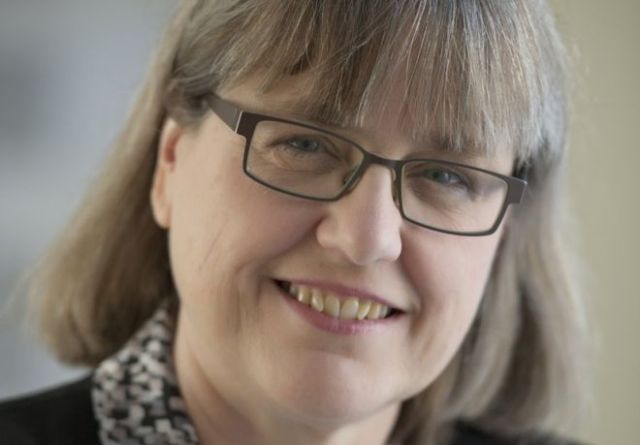The Nobel Prize in Physics has been awarded to a woman for the first time in 55 years.
A Canadian, Donna Strickland, has become the third woman winner of the Nobel Prize, along with Marie Curie, who won in 1903, and Maria Goeppert-Mayer, who was awarded the prize in 1963.
Dr Strickland shares this year’s prize with Arthur Ashkin, from the US, and Gerard Mourou, from France.
It recognises their discoveries in the field of laser physics.
Dr Ashkin developed a laser technique described as optical tweezers, which is used to study biological systems.
Drs Mourou and Strickland paved the way for the shortest and most intense laser pulses ever created. They developed a technique called Chirped Pulse Amplification (CPA). It has found uses in laser therapy targeting cancer and in the millions of corrective laser eye surgeries which are performed each year.
Speaking to the BBC, Dr Strickland said it was “surprising” it had been such a long time since a woman had won the award.
However, she stressed that she had “always been treated as an equal”, and that “two men also won it with me, and they deserve this prize as much if not more than me”.
The award comes a few days after a physicist gave a “highly offensive” lecture at the Cern particle physics laboratory in Geneva in which he said that physics had been “built by men” and that male scientists were being discriminated against.
He has since been suspended by the research centre.
Dr Strickland called the physicist’s remarks “silly” and said she never took such comments “personally”.
The last woman to win the physics prize, German-born American physicist Maria Goeppert-Mayer, took the award for her discoveries about the nuclei of atoms.
Polish-born physicist Marie Curie shared the 1903 award with her husband Pierre Curie and Antoine Henri Becquerel for their research into radioactivity.
The award is worth a total of nine million Swedish kronor (£770,686; $998,618).
Reacting to her win, Dr Strickland, who is based at the University of Waterloo in Canada, said: “First of all you have to think it’s crazy; so that was my first thought. And you do always wonder if it’s real.
“As far as sharing it with Gerard, of course he was my supervisor and mentor and he has taken CPA to great heights so he definitely deserves this award. And I’m so happy Art Ashkin also won.”
She added: “I think that he made so many discoveries early on that other people have done great things with that it’s fantastic that he is finally recognised.”
In a statement, the American Institute of Physics (AIP) offered its congratulations to all the winners, adding: “The countless applications made possible by their work, like laser eye surgery, high-power pettawat lasers, and the ability to trap and study individual viruses and bacteria, only promise to increase going forward.
“It is also a personal delight to see Dr Strickland break the 55-year hiatus since a woman has been awarded the Nobel Prize in Physics, making this year’s award all the more historic.”
What is the work that has won a Nobel?
Before Dr Strickland and Dr Mourou’s pioneering work, the peak power of laser pulses was limited because, when cranked up to high intensities, they would destroy the material used for amplifying its energy.
To get round this, the researchers first stretched the laser pulses in time to reduce their peak power, then amplified them and finally compressed them.
When a laser pulse is compressed in time and becomes shorter, more light is packed into a small space. This dramatically increases the intensity of the pulse.
Dr Strickland and Dr Mourou’s technique, called chirped pulse amplification (CPA), became standard for high intensity lasers.
Arthur Ashkin realised an old dream in science fiction – using the radiation pressure of light to move physical objects. In doing so, he invented the optical tweezers that are today used to grab particles, atoms, viruses and living cells with their laser-based pincers.
He first worked on getting laser light to push small particles towards the centre of the beam and hold them there.
Then, in 1987, he used the tweezers to capture living bacteria without harming them. The technique is now used widely to study the machinery of life.
As of 2018, Nobel Prizes have been awarded to 844 men, 48 women (Marie Curie won it twice), and 27 organizations. The list of women winners shows that
*Sixteen women have won the Nobel Peace Prize:
*fourteen have won the Nobel Prize in Literature,
*twelve have won the Nobel Prize in Physiology or Medicine,
*four have won the Nobel Prize in Chemistry,
*three have won the Nobel Prize in Physics,
*and one, Elinor Ostrom, has won the Nobel Memorial Prize in Economic Sciences.
They are:
The Nobel Prize in Physics 2018
Donna Strickland
“for groundbreaking inventions in the field of laser physics”
“for their method of generating high-intensity, ultra-short optical pulses.”
The Nobel Prize in Physics 1963
Maria Goeppert Mayer
“for their discoveries concerning nuclear shell structure”
The Nobel Prize in Physics 1903
Marie Curie, née Sklodowska
“in recognition of the extraordinary services they have rendered by their joint researches on the radiation phenomena discovered by Professor Henri Becquerel”
The Nobel Prize in Chemistry
The Nobel Prize in Chemistry 2009
Ada E. Yonath
“for studies of the structure and function of the ribosome”
The Nobel Prize in Chemistry 1964
Dorothy Crowfoot Hodgkin
“for her determinations by X-ray techniques of the structures of important biochemical substances”
The Nobel Prize in Chemistry 1935
Irène Joliot-Curie
“in recognition of their synthesis of new radioactive elements”
The Nobel Prize in Chemistry 1911
Marie Curie, née Sklodowska
“in recognition of her services to the advancement of chemistry by the discovery of the elements radium and polonium, by the isolation of radium and the study of the nature and compounds of this remarkable element”
The Nobel Prize in Physiology or Medicine
The Nobel Prize in Physiology or Medicine 2015
Youyou Tu
“for her discoveries concerning a novel therapy against Malaria”
The Nobel Prize in Physiology or Medicine 2014
May-Britt Moser
“for their discoveries of cells that constitute a positioning system in the brain”
The Nobel Prize in Physiology or Medicine 2009
Elizabeth H. Blackburn
“for the discovery of how chromosomes are protected by telomeres and the enzyme telomerase”
The Nobel Prize in Physiology or Medicine 2009
Carol W. Greider
“for the discovery of how chromosomes are protected by telomeres and the enzyme telomerase”
The Nobel Prize in Physiology or Medicine 2008
Françoise Barré-Sinoussi
“for their discovery of human immunodeficiency virus”
The Nobel Prize in Physiology or Medicine 2004
Linda B. Buck
“for their discoveries of odorant receptors and the organization of the olfactory system”
The Nobel Prize in Physiology or Medicine 1995
Christiane Nüsslein-Volhard
“for their discoveries concerning the genetic control of early embryonic development”
The Nobel Prize in Physiology or Medicine 1988
Gertrude B. Elion
“for their discoveries of important principles for drug treatment”
The Nobel Prize in Physiology or Medicine 1986
Rita Levi-Montalcini
“for their discoveries of growth factors”
The Nobel Prize in Physiology or Medicine 1983
Barbara McClintock
“for her discovery of mobile genetic elements”
The Nobel Prize in Physiology or Medicine 1977
Rosalyn Yalow
“for the development of radio immune assays of peptide hormones”
The Nobel Prize in Physiology or Medicine 1947
Gerty Theresa Cori, née Radnitz
“for their discovery of the course of the catalytic conversion of glycogen”
The Nobel Prize in Literature
The Nobel Prize in Literature 2015
Svetlana Alexievich
“for her polyphonic writings, a monument to suffering and courage in our time”
The Nobel Prize in Literature 2013
Alice Munro
“master of the contemporary short story”
The Nobel Prize in Literature 2009
Herta Müller
“who, with the concentration of poetry and the frankness of prose, depicts the landscape of the dispossessed”
The Nobel Prize in Literature 2007
Doris Lessing
“that epicist of the female experience, who with scepticism, fire and visionary power has subjected a divided civilisation to scrutiny”
The Nobel Prize in Literature 2004
Elfriede Jelinek
“for her musical flow of voices and counter-voices in novels and plays that with extraordinary linguistic zeal reveal the absurdity of society’s clichés and their subjugating power”
The Nobel Prize in Literature 1996
Wislawa Szymborska
“for poetry that with ironic precision allows the historical and biological context to come to light in fragments of human reality”
The Nobel Prize in Literature 1993
Toni Morrison
“who in novels characterized by visionary force and poetic import, gives life to an essential aspect of American reality”
The Nobel Prize in Literature 1991
Nadine Gordimer
“who through her magnificent epic writing has – in the words of Alfred Nobel – been of very great benefit to humanity”
The Nobel Prize in Literature 1966
Nelly Sachs
“for her outstanding lyrical and dramatic writing which interprets Israel’s destiny with touching strength”
The Nobel Prize in Literature 1945
Gabriela Mistral
“for her lyric poetry which, inspired by powerful emotions, has made her name a symbol of the idealistic aspirations of the entire Latin American world”
The Nobel Prize in Literature 1938
Pearl Buck
“for her rich and truly epic descriptions of peasant life in China and for her biographical masterpieces”
The Nobel Prize in Literature 1928
Sigrid Undset
“principally for her powerful descriptions of Northern life during the Middle Ages”
The Nobel Prize in Literature 1926
Grazia Deledda
“for her idealistically inspired writings which with plastic clarity picture the life on her native island and with depth and sympathy deal with human problems in general”
The Nobel Prize in Literature 1909
Selma Ottilia Lovisa Lagerlöf
“in appreciation of the lofty idealism, vivid imagination and spiritual perception that characterize her writings”
The Nobel Peace Prize
The Nobel Peace Prize 2014
Malala Yousafzai
“for their struggle against the suppression of children and young people and for the right of all children to education”
The Nobel Peace Prize 2011
Ellen Johnson Sirleaf
“for their non-violent struggle for the safety of women and for women’s rights to full participation in peace-building work”
The Nobel Peace Prize 2011
Leymah Gbowee
“for their non-violent struggle for the safety of women and for women’s rights to full participation in peace-building work”
The Nobel Peace Prize 2011
Tawakkol Karman
“for their non-violent struggle for the safety of women and for women’s rights to full participation in peace-building work”
The Nobel Peace Prize 2004
Wangari Muta Maathai
“for her contribution to sustainable development, democracy and peace”
The Nobel Peace Prize 2003
Shirin Ebadi
“for her efforts for democracy and human rights. She has focused especially on the struggle for the rights of women and children”
The Nobel Peace Prize 1997
Jody Williams
“for their work for the banning and clearing of anti-personnel mines”
The Nobel Peace Prize 1992
Rigoberta Menchú Tum
“in recognition of her work for social justice and ethno-cultural reconciliation based on respect for the rights of indigenous peoples”
The Nobel Peace Prize 1991
Aung San Suu Kyi
“for her non-violent struggle for democracy and human rights”
The Nobel Peace Prize 1982
Alva Myrdal
The Nobel Peace Prize 1979
Mother Teresa
The Nobel Peace Prize 1976
Betty Williams
The Nobel Peace Prize 1976
Mairead Corrigan
The Nobel Peace Prize 1946
Emily Greene Balch
The Nobel Peace Prize 1931
Jane Addams
The Nobel Peace Prize 1905
With BBC News reports













